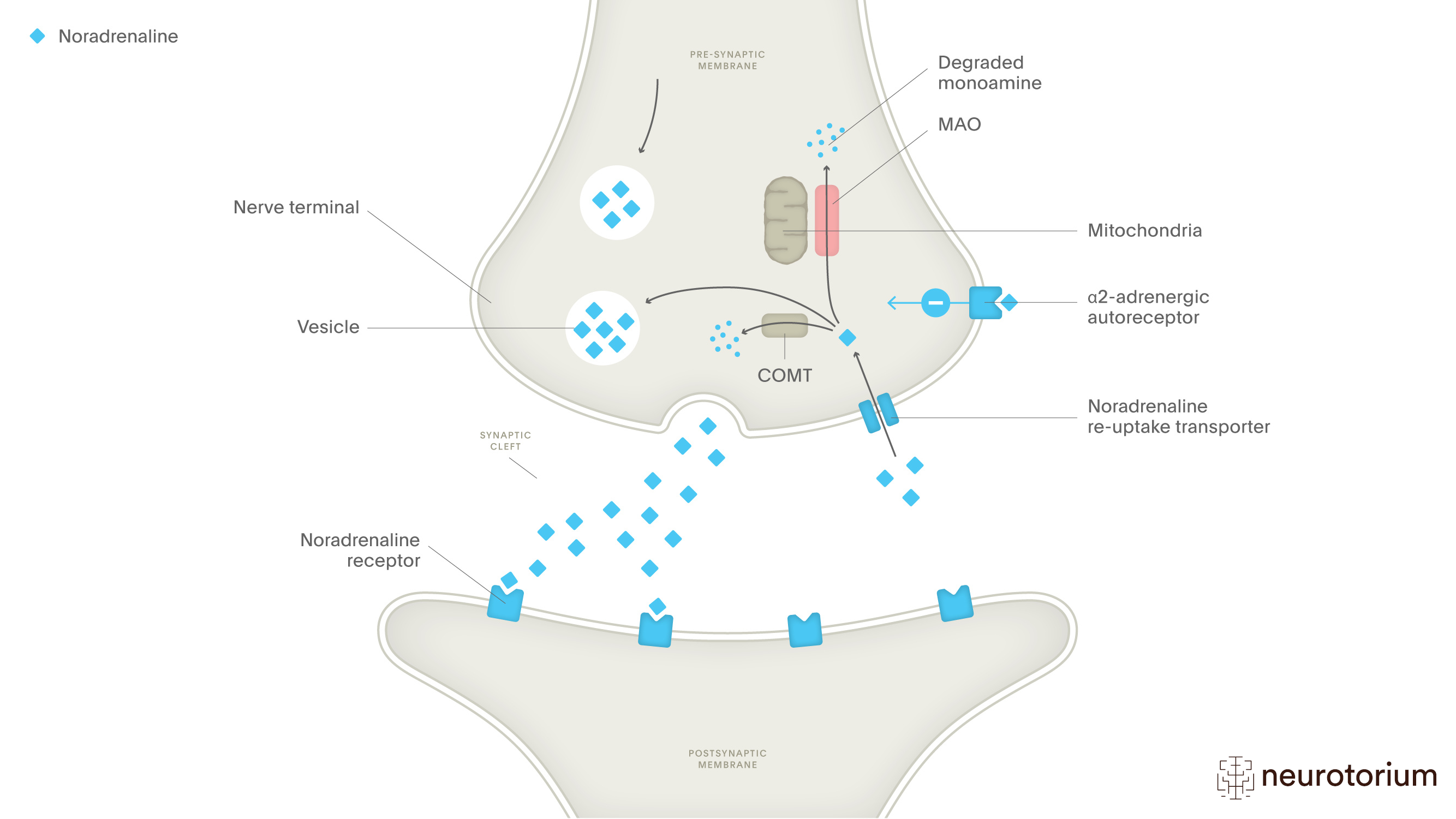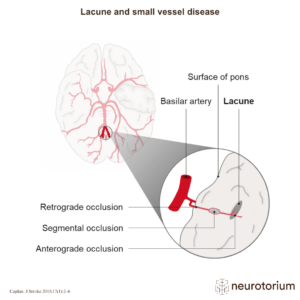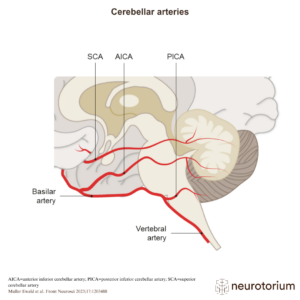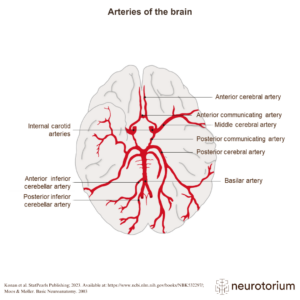When a nerve impulse arrives at a noradrenaline nerve terminal, noradrenaline is released from synaptic vesicles into the synaptic cleft. Noradrenaline molecules bind to their receptors on the post-synaptic membrane and the nerve impulse is propagated or inhibited, depending on the specific receptor. Noradrenaline molecules are then released from their receptors and taken back into the nerve terminal via the noradrenaline re-uptake transporter. Noradrenaline is degraded by monoamine oxidase (MAO) and catechol-O-methyltransferase (COMT).1,2





